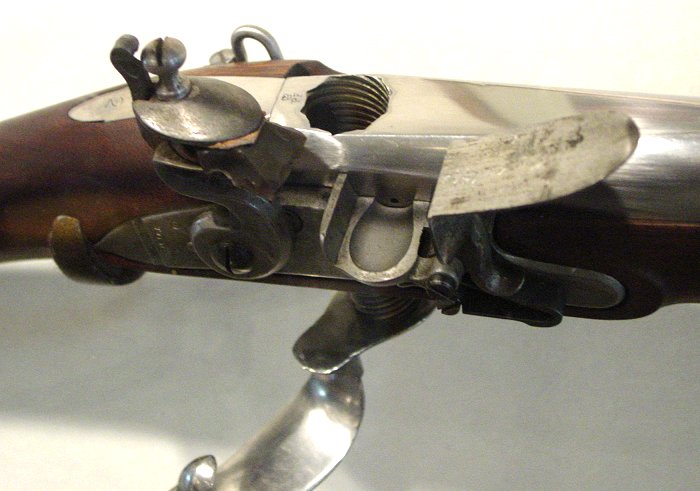
Ferguson Rifle
And Military Innovation in the 18th Century
Eighteenth century armies are often accused of excessive conservatism, and the failure to adopt the Ferguson Rifle in large numbers is often cited as a example. This criticism, however, is not necessary well founded. Armies of the time did innovate and adapt to new technology and circumstances. The development of more mobile artillery, the increased use of light infantry, and the increasing use of combined arms and maneuver columns clearly shows that armies were open to change. Bureaucracy improved to manage militaries of increasing size, and government centralized to raise the money to pay for it all. Indeed, innovation is what makes 18th century military history so interesting.
European armies did use rifles in limited numbers, usually only a handful per regiment. Their limitations, however, were great. Muzzle loading rifles were considerably slower to load than their smoothbore conterparts and could not be fitted with a bayonet, both serious disadvantages even in the difficult terrain of America. Developed by Major Patrick Ferguson, the breech loading Ferguson Rifle had the potential to eliminate the great disadvantages of the rifle. In tests at the Woolwich Arsenal, Ferguson was able to fire as many as six rounds per minute, hitting targets at up to 200 yards and hitting a bullseye at 100 yards from a prone position. Although an impressive technical achievement, most of the concepts were not new, which along with expense helps explain why it was used only on an experimental basis. The British army authorized a 100 man rifle corps armed with the rifle and commanded by its inventor. In its first campaign, Ferguson himself got within his sights a high ranking American commander, thought to be George Washington, but the Scotsman couldn't bring himself to kill the brave man. In its debut battle, Brandywine, the rifle corps took heavy losses and Ferguson was wounded. This undoubtedly hurt prospects for widespread use of the weapon, and after participating in the attack at Paoli, the corps was disbanded. The replacement at the end of the year of the army commander, Sir William Howe, who had sponsored the weapon, perhaps put the final nail in the rifle's coffin. By the time of Ferguson's death at Kings Mountain in 1780, all hopes for adoption of the weapon were over.

Ferguson Rifle Breech Mechanism
This reproduction Ferguson Rifle is on display at the Brandywine Battlefield State Park. A screw mechanism used multiple tapered threads, making a good seal which was still easy to open and close. A turn of the handle opened up the breech, allowing the infantryman to insert a bullet and powder. Another turn of the handle would close the breech and push excess powder into the pan, priming the rifle and making it nearly ready to fire. Some weapons historians speculate that fouling caused by expended gunpowder may have hindered the mechanism, making the weapon less practical on the battlefield. Indeed, breechloaders were only made practical by the invention of the metallic cartridge in the mid 1800s. As only 100 Ferguson Rifles were built, spare parts were unavailable when problems occurred, which perhaps explains why only two original rifles survive..

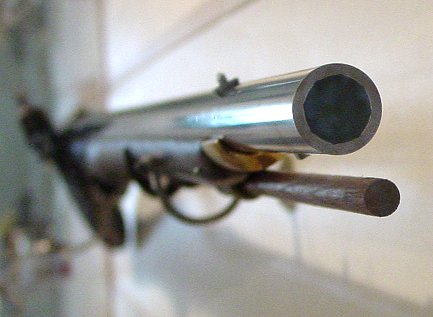
Ferguson Rifle - Other Views
The sight and rifled barrel are visible in these views.
Military Innovation
In the event that you're still not convinced that 18th century armies were open to new and improved weapons, take a look at some of the odd weapons below. They don't even include the compressed air gun or Cugnot's steam powered vehicle for pulling artillery! As you might imagine, many of these weapons proved to be impractical in some way or another.
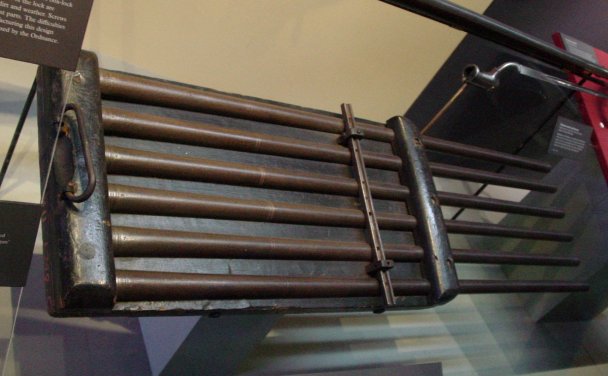 |
| Late 1600s Organ Gun - a Dutch attempt to fire multiple barrels at one time. Tower of London |
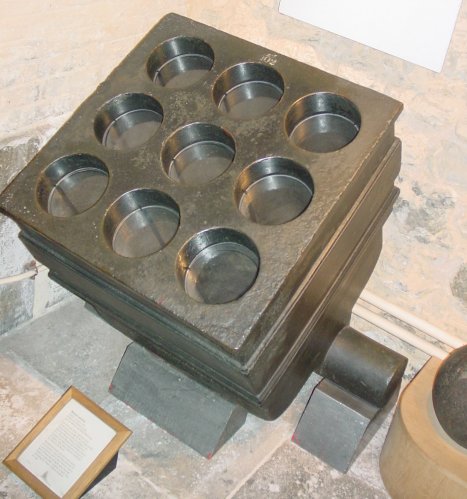 |
| 1680s - English nine barreled mortar, possibly intended for naval use but only used to shoot off fireworks. Tower |
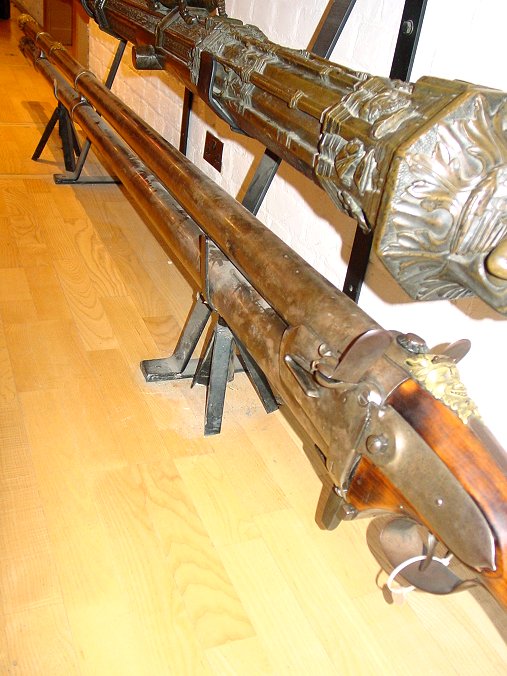 |
| 1690 - French double barreled breech loading rifle gun. Note a pan on each side. Royal Armouries at Ft Nelson |
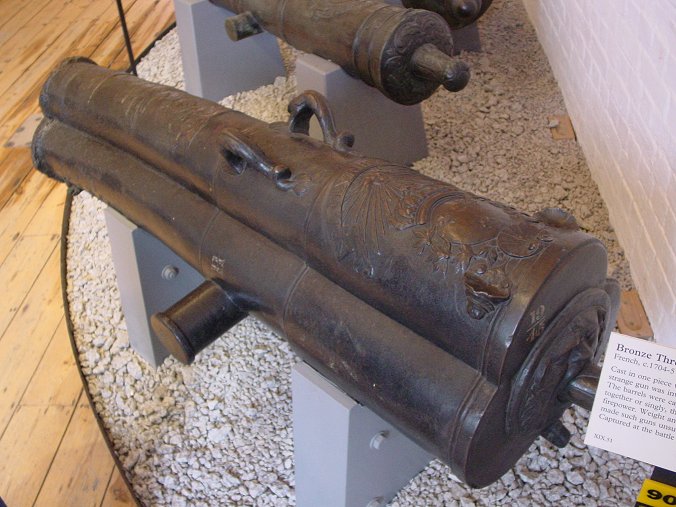 |
| 1704 French three barreled cannon. The great secret weapon of the War of Spanish Succession - which proved impractical in the field. Ft Nelson |
 |
| 1730 French flintlock grenade launcher. Ain't it cute? You know you want one. Leeds |
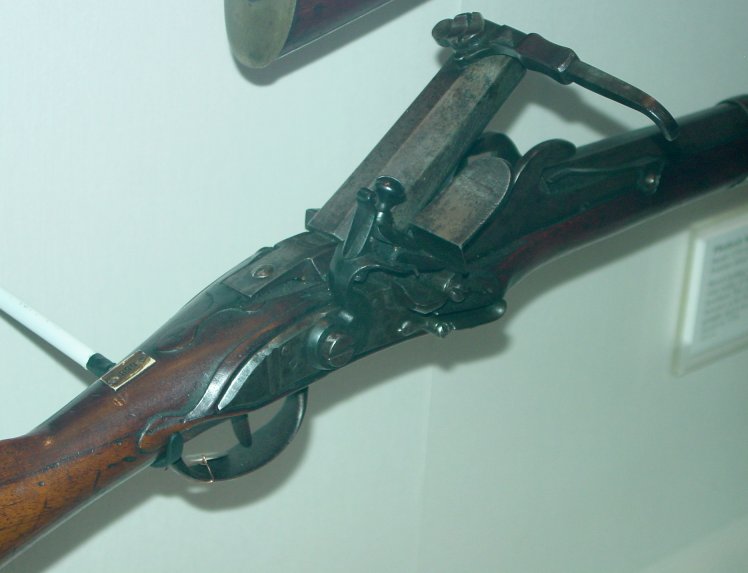 |
| 1770 Austrian Crespi breechloading carbine. The breech was not gas tight so the weapon was taken out of service. Leeds |
 |
| 1779 English flintlock volley gun, a seven barreled gun actually adopted for naval use. Leeds |
Back to Revolutionary War Virtual Battlefield Tours